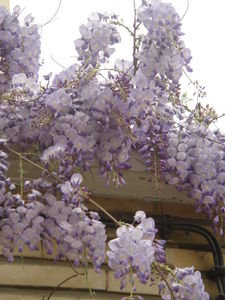Advertisement

 Heralding Spring
Heralding Spring
Lavendar bundles drape city wallsWe are the flute, our music is all Thine;
We are the mountains echoing only Thee;
And movest to defeat or victory;
Lions emblazoned high on flags unfurled-
They wind invisible sweeps us through the world.
-Rumi,
The Unseen Power Hidden from the West behind a curtain of contemporary politics lies a land of indescibable beauty. To draw back that curtain is to enter into a palace of splendor, where chivalry echos through the palaces and statues, where snow-capped mountains breath crisp life into the air of the city. This is the land of the mystic poets, Hafiz and Rumi. This is the place where tall trees arch the roadways, where the scent of rosewater and saffron might perfume an afternoon walk. As curling, leaflike window-coverings lace houses, and the tiny lights of Darband, the city in the mountain, spiral around the ancient rocks toward the moonlit night, you might think you have stepped into a mythical land. Surprise - this is Iran, Persia, the Jewel of the East you didn't hear about on the five o'clock news.
The photographs you see here are taken at the beginning of Spring. In keeping with ancient tradition, the first day

 Snowcapped Mountains
Snowcapped Mountains
Mount Damavand overlooks Tehran, and the Alborz Mountains wind northward to the Caspian Seaof Spring is the New Year in Iran or Nowruz. The celebration of the arrival of Spring is evident everywhere, where shopkeepers display hyacinths, greenery, goldfish in bowls, and other traditional symbols of Spring. As has been done in Persia for an age, each family collects seven (haft) items that begin with S (seen) and places them on a table (the "haft-seen") for the New Year. One item is a container of sprouted greenery that on the thirteenth day is cast to the wind to grow. Before so doing, you must tie two of the sprouts in a knot, known as marrying. It is this tradition from whence the saying "tie the knot" with which we are all familliar came from.
A sampling of photographs from our magnificent journey are provided, and more of the story is to follow, including our journey through the mountains, so stay tuned.
Advertisement
Tot: 0.073s; Tpl: 0.014s; cc: 6; qc: 45; dbt: 0.0337s; 1; m:domysql w:travelblog (10.17.0.13); sld: 1;
; mem: 1.1mb

 Heralding Spring
Heralding Spring
 Snowcapped Mountains
Snowcapped Mountains




























